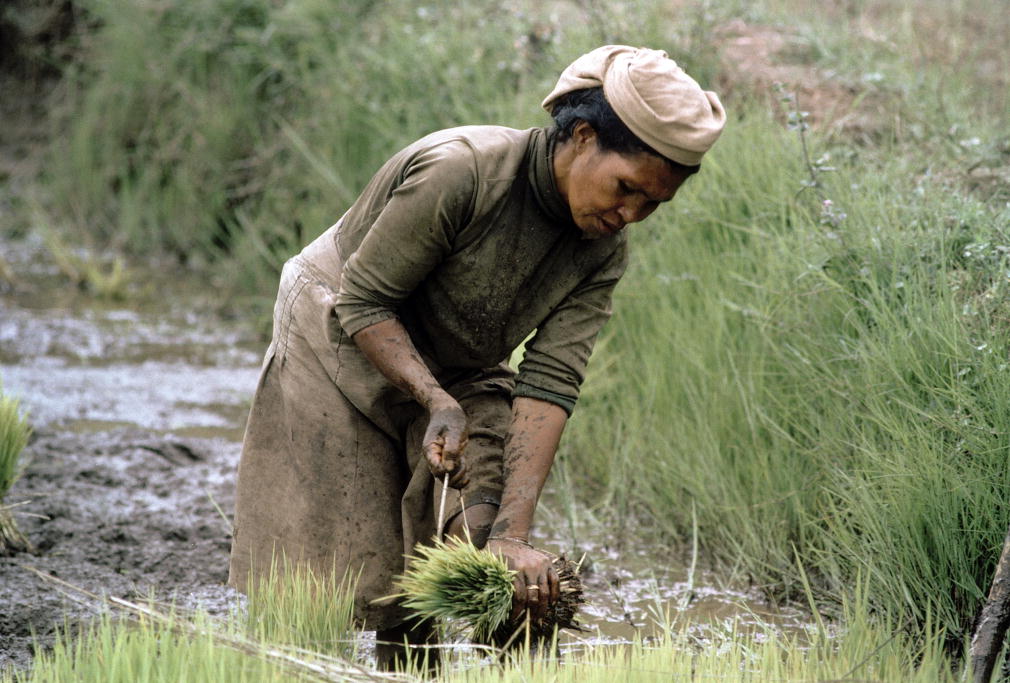
Over the last fifteen years, gender gaps in employment remained steady in many parts of the world, while the gaps grew wider in others. The chance for women to participate in the labor market is about 27 percent lower than for men, according to a recent report by the International Labor Organization.
Improving women’s employment prospects is a long-standing goal of development agencies worldwide. Scholars, policy makers, and development practitioners alike claim that employment empowers women, reduces poverty, and improves child health, especially in developing countries.
But a recent study of mine suggests that this is not always the case. Employment is not necessarily a tool for women’s empowerment and better health in poor countries.
In theory, women’s employment improves family wellbeing by giving them greater control over income. This is essential for improving child health because women and men spend money differently. Women are more likely to use economic resources on basic family needs, like food and education.
Gainful employment outside the home and the income that it brings, in turn, improve the social status of women. Women become less dependent on men. Their contribution to the prosperity of the family is more visible. This gives them more bargaining power and influence in household decisions. With greater empowerment, women can care for their children more effectively.
Yet, in a study of over 275,000 children across 49 developing countries, I find that maternal employment is not necessarily beneficial to child health. First, countries with the highest rates of women’s employment are also among the poorest. Employment may not be a reflection of empowerment, but rather a reflection of extreme disadvantage. Higher rates of women’s employment likely indicate the essential need to work, not women’s autonomy.
Second, whether or not a mother works is not what matters. Rather, the type of employment determines whether children reap benefits from their mother’s work. Some occupations are protective of child health, others are harmful, and still others have no substantial impact. Employment in and of itself is not a magic bullet. Some jobs do not yield the benefits that are typically associated with working outside the home.
When women work in professional, clerical, sales, or domestic jobs, their children are at lower risk of malnutrition. But, when they work in agricultural jobs, their children are more likely to be malnourished. Manual labor and service work are unrelated to risk of malnutrition.
Approximately 28 percent of the women in the study report that they work in agriculture, and 10 percent report manual or service work. This is compared to 16 percent who work in professional, clerical, sales, and domestic jobs. This means that a relatively small percentage of children experience better health because of their mother’s work.
Agricultural workers are particularly disadvantaged. They seldom own the land they cultivate. They are vulnerable to poverty and gender discrimination. They often have few other options because they live in rural areas. Vulnerable employment does not empower women. It is merely a reflection of their subordinate place in society.
Promoting female employment will not benefit wellbeing if vulnerabilities in women’s work are not addressed. Women earn less than men on average. Women also tend to be overrepresented in industries that undermine their self-efficacy and potential. Policies are needed to remove women’s barriers to labor force participation. But they are also needed to improve their representation in occupations that can truly have transformative consequences for the lives of women and their children.
Ensuring access to quality education is one way to improve women’s employment outcomes. And policies that are meant to promote maternal work need to also offset the risks that are associated with work, like hazardous working conditions or lack of adequate childcare. Market child-care substitutes are often unavailable in rural areas or unaffordable in urban areas. This limits employment options for women and decreases their earnings potential.
Women’s employment does not guarantee empowerment. But, certain types of jobs can potentially help women provide better lives for their children. The challenge that lies ahead is to help women gain access to good jobs as countries grow and develop.
Read more
Rebekah Burroway, “Are All Jobs Created Equal? A Cross-National Analysis of Women’s Employment and Child Malnutrition in Developing Countries” in Social Science Research 2017.
For a free, pre-publication version of the article, click here.
Image: UN Photo via Flickr (CC BY-NC-ND 2.0)

1 Comment
Very interesting and important results, thanks for posting.